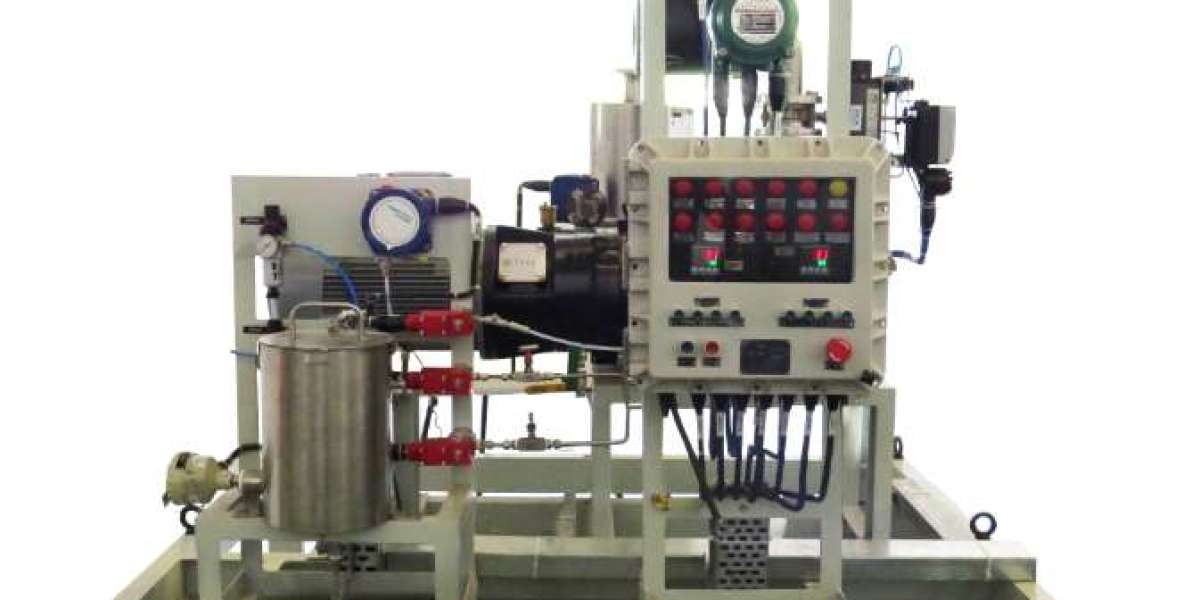Vacuum pumps are indispensable in many industries, from pharmaceuticals to food packaging, semiconductor manufacturing to scientific research. These essential machines help maintain precise low-pressure environments, ensuring processes operate smoothly. However, even the most reliable vacuum pump issues that impede their performance. Understanding how to troubleshoot these problems can be crucial in maintaining optimal efficiency and avoiding costly downtime.
In this blog, we will dive into some of the most common vacuum pump issues, identify their potential causes, and provide actionable insights on how to troubleshoot and resolve these problems.
Understanding the Basics: How Vacuum Pumps Work
Before we delve into troubleshooting, it’s important to understand how vacuum pumps function. A vacuum pump works by creating a low-pressure environment within a sealed system by removing air or other gases. They use various mechanisms such as rotary motion, diaphragm movement, or centrifugal force to achieve this.
Depending on the type of pump — whether it’s an oil-sealed vacuum pump, dry vacuum pump, or rotary vane vacuum pump the specifics of operation and common issues will vary. Regardless, most vacuum pump problems boil down to a few key factors, including mechanical wear, improper maintenance, system leaks, and power issues.
Common Vacuum Pump Issues and How to Troubleshoot Them
Now that we have an understanding of the basic function of a vacuum pump, let’s explore some of the most common issues users face and the steps you can take to troubleshoot them.
1. Loss of Vacuum Pressure
Problem: One of the most noticeable issues with vacuum pumps is the loss of vacuum pressure. This can result in subpar system performance, prolonged processing times, or complete failure of operations.
Possible Causes:
- Leaks in the system: Leaks in the piping or fittings can allow air back into the vacuum system, reducing its efficiency.
- Damaged seals or gaskets: Over time, seals and gaskets may wear out, leading to air leakage and poor vacuum performance.
- Pump wear: If the pump components, such as vanes or diaphragms, are worn down, the pump may not create the necessary vacuum pressure.
Troubleshooting Steps:
- Check for leaks: Conduct a thorough inspection of all seals, gaskets, and connections in the system. You can use a helium leak detector to check for the smallest leaks. If any leaks are found, replace the damaged seals or tighten the fittings.
- Inspect pump components: Look for signs of wear on the pump’s internal parts, including vanes, diaphragms, or valves. If these components are damaged or excessively worn, replacing them may restore full vacuum pressure.
- Test for system leaks: If the pump is operating properly but the system is losing vacuum, use a manometer or vacuum gauge to pinpoint areas where leaks are occurring.
2. Increased Power Consumption
Problem: Vacuum pumps consuming more power than usual is a sign that something is wrong. Excessive power consumption leads to higher operational costs and can indicate underlying mechanical or electrical problems.
Possible Causes:
- Pump overload: If the pump is trying to evacuate a system that is too large or has a high leak rate, it will need to work harder, leading to increased power consumption.
- Clogged intake filters: A dirty or clogged intake filter restricts airflow, forcing the pump to work harder than it should.
- Oil contamination or degradation: In oil-sealed vacuum pumps, degraded or contaminated oil can lead to higher friction and inefficient pumping.
Troubleshooting Steps:
- Check filter conditions: Inspect the intake filters and replace them if they are dirty or clogged. Clean filters will improve airflow and reduce the strain on the pump.
- Examine the oil: For oil-sealed pumps, inspect the oil level and quality. If the oil is contaminated or degraded, change it immediately. Ensure the oil is at the correct level for optimal performance.
- Check for overload conditions: Review the system’s specifications and ensure the pump is not being asked to handle more than it was designed for. If necessary, adjust the system size or install a larger vacuum pump.
3. Excessive Noise or Vibration
Problem: Excessive noise or vibration during pump operation can indicate mechanical issues that may lead to significant damage if left unaddressed. This issue is particularly noticeable in rotary vane or diaphragm pumps.
Possible Causes:
- Worn-out pump components: Over time, parts like vanes, bearings, or seals can wear down, causing the pump to run unevenly and create noise.
- Loose or misaligned parts: Components that are not properly aligned or secured can cause imbalanced operation, leading to excessive vibration.
- Contamination: Dirt, debris, or foreign particles in the pump can disrupt smooth operation, causing increased friction and noise.
Troubleshooting Steps:
- Inspect for wear: Open the pump casing and inspect the internal components, such as vanes, bearings, and seals. If any parts are worn or damaged, replace them immediately.
- Check alignment: Ensure that all pump components are properly aligned and secured. Misalignment can cause excessive vibrations and lead to further damage.
- Clean the pump: If contamination is suspected, clean the pump thoroughly to remove dirt and debris. Ensure that the intake filter is clean as well.
4. Oil Leaks in Oil-Sealed Pumps
Problem: Oil-sealed vacuum pumps are known to experience oil leakage over time. This can lead to environmental contamination, reduced pump performance, and possible system failure.
Possible Causes:
- Worn-out seals or gaskets: Seals that have degraded over time can allow oil to escape from the pump.
- Improper installation: If the pump has been improperly installed, this can lead to oil leaks at the connection points.
- Overfilled or underfilled oil: The oil level in the pump must be just right. Too much oil can cause leaks, while too little oil leads to improper lubrication.
Troubleshooting Steps:
- Check seals and gaskets: Inspect all seals and gaskets around the oil chambers. If they appear worn or damaged, replace them.
- Correct oil levels: Ensure the oil is at the correct level. If the oil level is too high or too low, adjust accordingly. Always use the manufacturer-recommended oil for your vacuum pump.
- Review installation: If the pump was recently installed, ensure that all connection points are sealed properly and that the installation was done according to the manufacturer’s instructions.
5. Pump Overheating
Problem: Overheating is a common issue with vacuum pumps, especially in oil-sealed models. If the pump temperature exceeds normal operating levels, it can cause serious damage to both the pump and the surrounding equipment.
Possible Causes:
- Insufficient cooling: If the pump lacks proper ventilation or cooling, it can overheat, leading to breakdowns and failure.
- Overworking the pump: Continuously running the pump beyond its capacity or operating it in an environment that’s too demanding can lead to overheating.
- Dirty or degraded oil: In oil-sealed pumps, dirty or old oil can increase friction, causing the pump to overheat.
Troubleshooting Steps:
- Improve ventilation: Ensure the pump is operating in a well-ventilated area. If needed, add external cooling systems or fans to keep the pump at a safe temperature.
- Review pump load: Ensure the pump is not being asked to handle more than it is designed for. If necessary, adjust the system or use a larger pump to meet the demands.
- Change the oil: In oil-sealed pumps, check the oil condition and replace it if it has become dirty or degraded. Fresh, clean oil reduces friction and helps maintain optimal pump temperature.
6. Contaminated Vacuum System
Problem: Contamination within the vacuum system can significantly impact the efficiency of the pump and the quality of the vacuum environment. This is particularly problematic in industries where cleanliness is critical, such as in pharmaceuticals or food processing.
Possible Causes:
- Contaminated air supply: If the incoming air contains particles or impurities, these can be drawn into the system and contaminate both the pump and the vacuum chamber.
- Old or degraded oil: In oil-sealed pumps, contaminated oil can lead to particles circulating through the system, causing further contamination.
Troubleshooting Steps:
- Use proper filtration: Ensure that the air supply to the vacuum pump is properly filtered. Replace any filters that are clogged or worn.
- Replace contaminated oil: Regularly change the oil in oil-sealed vacuum pumps. If the oil appears dirty or contaminated, replace it with fresh oil.
- Clean the system: Periodically clean the vacuum chamber and components to remove any built-up contaminants. This will help maintain both pump performance and product quality.
Conclusion
Vacuum pumps are complex machines that require regular maintenance and troubleshooting to keep them running efficiently. From loss of vacuum pressure to oil leaks, noise issues, and overheating, there are a variety of problems that can arise. However, with a solid understanding of the causes and troubleshooting steps, you can address these issues before they lead to more significant problems or costly downtime.
By regularly inspecting your vacuum pump system, performing scheduled maintenance, and using the right troubleshooting techniques, you can extend the life of your vacuum pump and ensure that your operations continue to run smoothly. Remember, a well-maintained vacuum pump is key to maximizing the efficiency and performance of your industrial processes.


